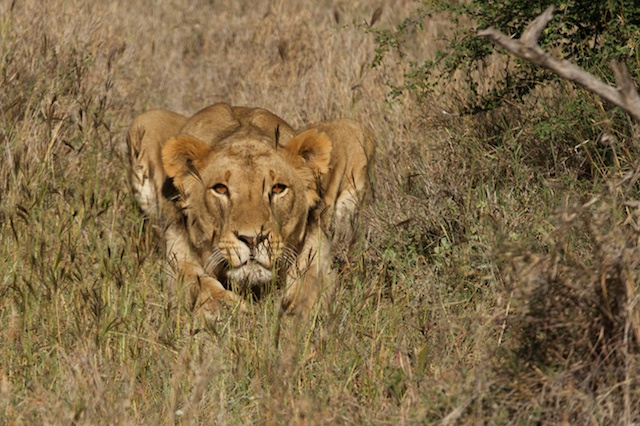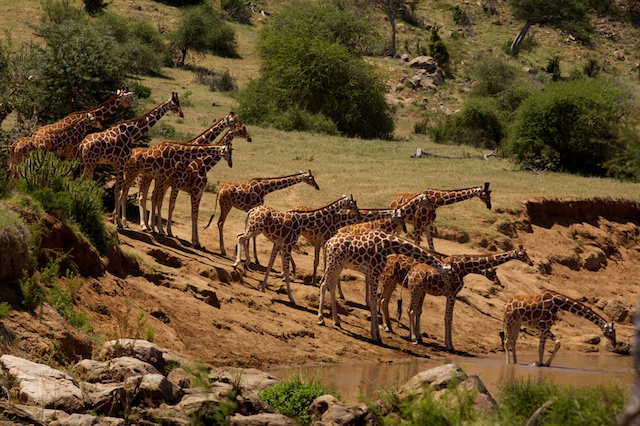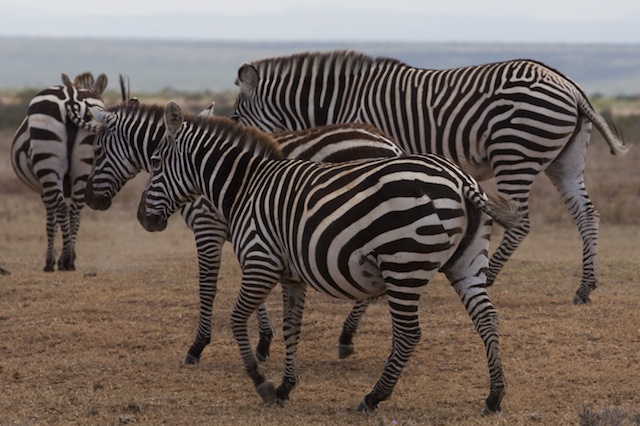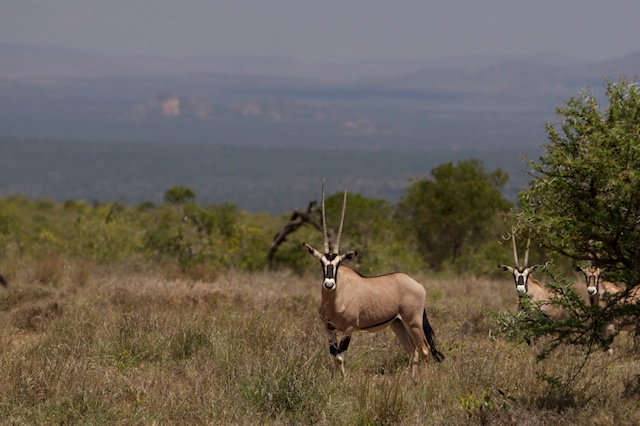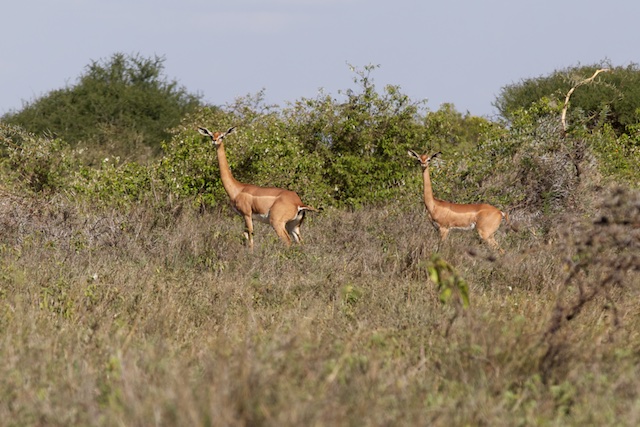In October I was on safari in Laikipia County in Kenya.
This multi-use area covers about 9,500 km2 (3,700 mi2) and straddles the equator between Mount Kenya and the Aberdare Mountain range. Although most of Laikipia is at high altitude, it is fairly dry country and is generally more suitable for ranching and wildlife than agriculture. There are wonderful camps and luxury lodges on some of the ranches.
On this safari we were staying in Anne Powys’ Suyian Soul camp. The camp is located in a corner of the Powys’ family cattle ranch, where Anne was raised.
As we drove onto the ranch from the airstrip we saw lots of wildlife – plains zebra, Grant’s gazelle and common ostrich, as well as species that you do not see in any other part of Africa, such as Beisa oryx, Grevy’s zebra, Jackson’s hartebeest, gerenuk and reticulated giraffe. We then tracked lions, one of which had been collared for research, and found a pride near the road hiding under an acacia. They were very attentive as we approached and snarled and growled a bit.
Until recently lions in this area were rarely seen in larger groups than twos, as they were considered vermin, threatening livestock, and were shot. These often single animals were naturally very furtive, and found large wild animals difficult to hunt, and smaller ones hard to catch and if caught they provided little nourishment. Often hungry, they frequently attacked and killed sheep and occasionally cattle. Now in many areas of Laikipia the approach to predators has changed. Much stronger “bomas” (cattle enclosures) have been constructed, and the lions are left in peace.
Anne told us that an interesting side effect of there being larger prides of lions is that they are able to collectively hunt larger game. Since there are plenty of large plains game in the area, these have become the favored prey over cattle, which have herdsmen and often also dogs in tow. In other words the old method of killing lions changed their behavior, forcing them to attack the very animals the ranchers were trying to protect.
Often the solution to a problem is not what you would think!
Justin

